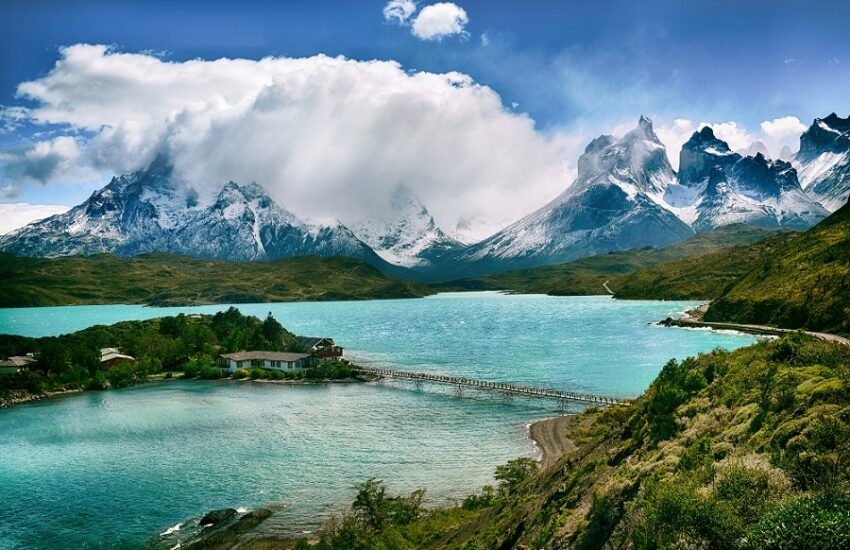South America is a continent of unparalleled beauty, offering a diverse tapestry of natural wonders, cultural treasures, and adventurous landscapes. Here are 20 of the most Beautiful Places to Visit in South America suggested Mohit Tandon from Illinois:
1. Machu Picchu, Peru
Firstly, Machu Picchu is an ancient Incan citadel located in the Andes Mountains of Peru, perched high above the Urubamba River valley. It is famous for its well-preserved stone structures, including temples, terraced fields, and ceremonial sites. Machu Picchu was built in the 15th century by the Inca emperor Pachacuti and is believed to have been a royal estate or sacred religious site. The site’s stunning location, nestled between two peaks—Machu Picchu and Huayna Picchu—offers breathtaking panoramic views of the surrounding mountains and cloud forest. Visitors can explore the Inti Watana stone, thought to be an astronomical clock or calendar. They can also visit the Temple of the Sun, which features finely crafted stonework. Machu Picchu’s mystical atmosphere and architectural marvels make it one of the most iconic and sought-after destinations in South America.
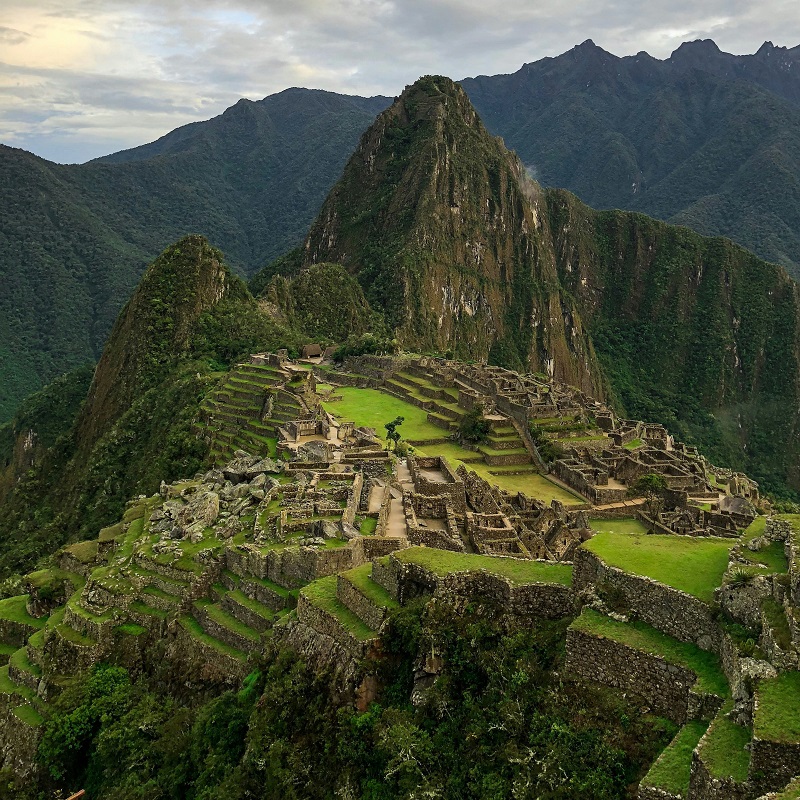
2. Galapagos Islands, Ecuador
Secondly, The Galapagos Islands, located approximately 1,000 kilometers off the coast of Ecuador, are a living laboratory of evolution and biodiversity. This UNESCO World Heritage site is famous for its unique wildlife species, many of which are found nowhere else on Earth. Visitors to the Galapagos can encounter giant tortoises, marine iguanas, blue-footed boobies, and Galapagos penguins, among others. Especially, The islands’ volcanic landscapes offer diverse habitats, from lush highlands to rocky shores and pristine beaches. Snorkeling and diving opportunities abound, allowing visitors to explore underwater worlds teeming with marine life. This includes encounters with sea lions, sharks, and colorful fish. The Galapagos Islands are a paradise for nature lovers and offer a once-in-a-lifetime opportunity to witness evolution in action.

3. Iguazu Falls, Argentina/Brazil
Thirdly, Iguazu Falls, situated on the border between Argentina and Brazil. It is one of the largest and most spectacular waterfall systems in the world. The falls consist of approximately 275 individual cascades spread over nearly 3 kilometers, with heights reaching up to 80 meters. Surrounded by lush subtropical rainforest, the roaring waters of Iguazu create a mesmerizing spectacle of mist, rainbows, and wildlife. Visitors can explore the falls from both the Argentine and Brazilian sides, each offering unique viewpoints and experiences. The Garganta del Diablo (Devil’s Throat) is the most impressive section, where water crashes down into a narrow chasm, enveloped in perpetual mist. Iguazu Falls is not only a natural wonder but also a UNESCO World Heritage site, attracting visitors from around the globe to marvel at its awe-inspiring beauty.
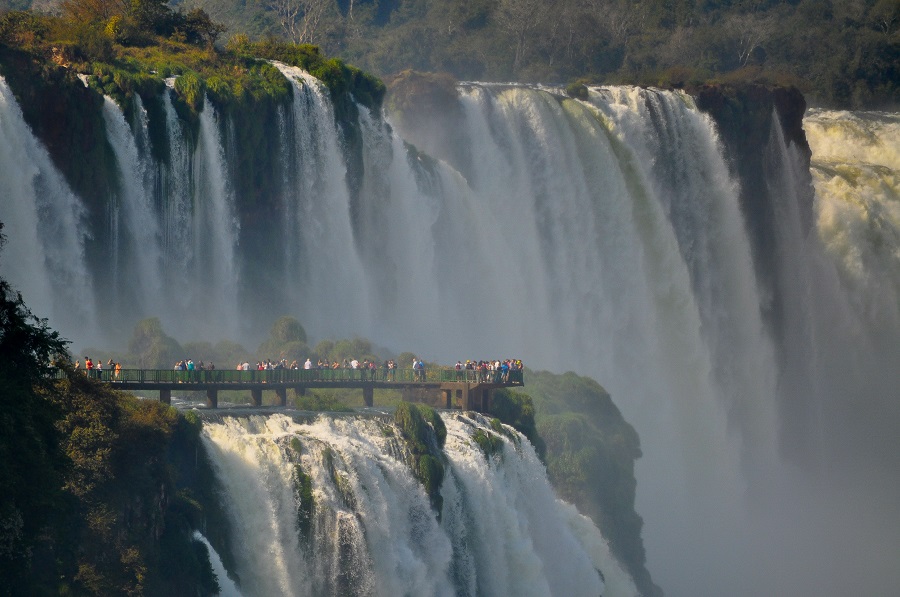
4. Torres del Paine National Park, Chile
Especially, Torres del Paine National Park is a crown jewel of Patagonia, located in southern Chile. It is characterized by its dramatic granite peaks, expansive glaciers, turquoise lakes, and vast open pampas. The park’s iconic landmarks include the three granite towers (Torres del Paine), the horn-shaped Cuernos del Paine, and the stunning Grey Glacier. Visitors to Torres del Paine can embark on world-class trekking routes such as the W Trek and the Circuit, which offer breathtaking views of the park’s rugged landscapes and diverse wildlife, including guanacos, Andean condors, and pumas. Other activities include boat trips to Grey Glacier, horseback riding, and birdwatching. Torres del Paine National Park is a haven for outdoor enthusiasts seeking adventure and natural beauty in one of the most pristine wilderness areas on Earth.

5. Rio de Janeiro, Brazil
Rio de Janeiro, often called the “Cidade Maravilhosa” (Marvelous City), is a vibrant metropolis nestled between lush mountains and the Atlantic Ocean. Especially, This iconic Brazilian city is famous for its lively Carnival celebrations, samba music and dance, and stunning natural landscapes. At the heart of Rio lies the Christ the Redeemer statue, perched atop Corcovado Mountain, offering sweeping views of the city and Guanabara Bay. Sugarloaf Mountain is another must-visit landmark, accessible by cable car, where visitors can enjoy panoramic vistas and stunning sunsets. Rio’s famous beaches, including Copacabana and Ipanema, are perfect for relaxing, people-watching, and enjoying beachside activities. The city’s cultural richness, historic architecture, and warm hospitality make Rio de Janeiro a captivating destination for travelers from around the world.

6. Amazon Rainforest, Brazil/Peru
The Amazon Rainforest is the world’s largest tropical rainforest, spanning multiple countries in South America, with the largest portion located in Brazil. This immense and biodiverse ecosystem is home to an estimated 10% of the world’s known species, including jaguars, sloths, macaws, and countless plant species. Visitors to the Amazon can explore its vast rivers, dense jungle trails, and remote indigenous communities, gaining insights into traditional ways of life and conservation efforts. Activities range from wildlife watching and birding expeditions to canoeing, fishing, and nocturnal jungle treks. Lodges and eco-friendly tours offer sustainable ways to experience the Amazon’s natural wonders while minimizing impact on the environment. The Amazon Rainforest is a living treasure trove of biodiversity and a must-visit destination for nature enthusiasts and adventurers seeking an immersive wilderness experience. – Mohit Tandon Illinois

7. Salar de Uyuni, Bolivia
Salar de Uyuni is the world’s largest salt flat, spanning over 10,000 square kilometers in southwest Bolivia. This otherworldly landscape of bright white salt crusts, scattered cacti islands, and expansive horizons creates a surreal and mesmerizing experience for visitors. During the rainy season (November to March), a thin layer of water transforms the salt flat into a giant mirror, reflecting the sky with stunning clarity. In the dry season, geometric patterns of salt formations emerge, resembling an endless expanse of snow-covered plains. Travelers to Salar de Uyuni can explore the Incahuasi Island, known for its towering cacti and panoramic views, and witness unforgettable sunrises and sunsets over the vast salt crusts. This natural marvel is a photographer’s dream and a testament to the Earth’s mesmerizing beauty.
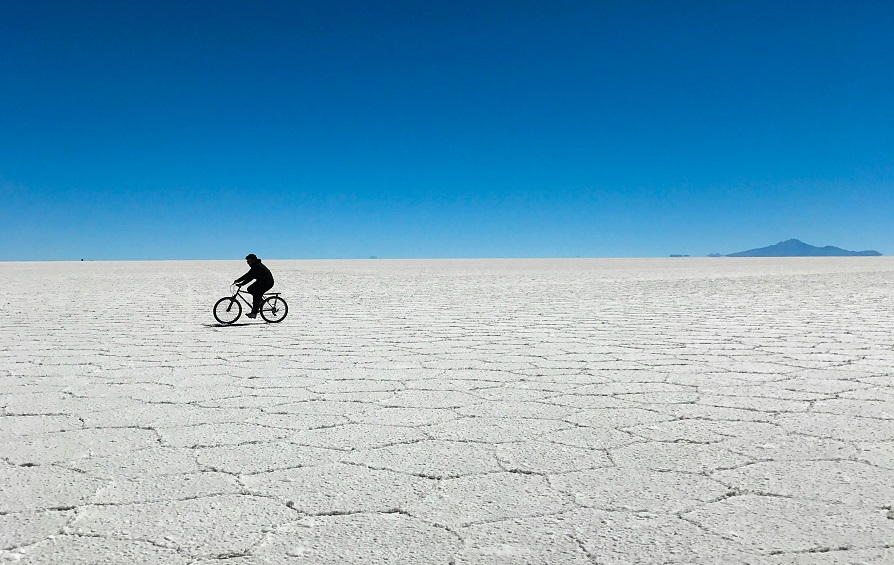
8. Patagonia, Argentina/Chile
Patagonia is a vast region of staggering natural beauty, spanning southern Argentina and Chile. This remote wilderness is characterized by its jagged peaks, vast glaciers, pristine fjords, and expansive pampas. In Argentine Patagonia, visitors can marvel at the towering Perito Moreno Glacier in Los Glaciares National Park, where ice formations calve into turquoise waters with thunderous roars. The iconic peaks of Fitz Roy and Cerro Torre draw climbers and trekkers seeking adventure amid Patagonia’s dramatic landscapes. In Chilean Patagonia, Torres del Paine National Park offers unparalleled trekking opportunities with views of the Torres del Paine peaks and the Grey Glacier. Visitors can also explore the region’s pristine waterways, including the legendary Strait of Magellan and Tierra del Fuego archipelago. Patagonia’s rugged beauty and pristine wilderness make it a bucket-list destination for outdoor enthusiasts and nature lovers. – Mohit Tandon Illinois

9. Lake Titicaca, Peru/Bolivia
Lake Titicaca is the largest lake in South America by volume and the highest navigable lake in the world, situated on the border between Peru and Bolivia. Revered by the Incas as the birthplace of the sun, Lake Titicaca is steeped in myth and legend, with its shimmering blue waters surrounded by snow-capped Andean peaks. Visitors can explore traditional villages and archaeological sites on the lake’s islands, including Taquile and Amantani, where indigenous communities preserve ancient customs and craftsmanship. The Uros Islands, made of floating reeds, offer a unique glimpse into a way of life adapted to the lake’s ever-changing waters. Activities on Lake Titicaca include boat trips, homestays with local families, and cultural exchanges with Quechua and Aymara communities. Lake Titicaca’s natural beauty and cultural richness make it a captivating destination for travelers seeking authentic experiences in the high Andes.

10. Cartagena, Colombia
Cartagena is a UNESCO World Heritage city on Colombia’s Caribbean coast, renowned for its well-preserved colonial architecture, vibrant colors, and historic forts. Founded in the 16th century, Cartagena de Indias was a key port city for Spain’s New World empire, and its rich history is reflected in its cobblestone streets, balconied houses, and grand plazas. The walled Old Town (Ciudad Amurallada) is a labyrinth of colonial-era churches, monasteries, and mansions, including the iconic Palacio de la Inquisicion and the Cathedral of Cartagena. The lively Plaza Santo Domingo is a gathering place for locals and visitors alike, surrounded by cafes, restaurants, and street performers. Outside the city walls, the Bocagrande district offers modern amenities and beachfront hotels overlooking the Caribbean Sea. Cartagena’s blend of history, culture, and coastal charm makes it a vibrant and enchanting destination on Colombia’s Caribbean coast. – Mohit Tandon Illinois
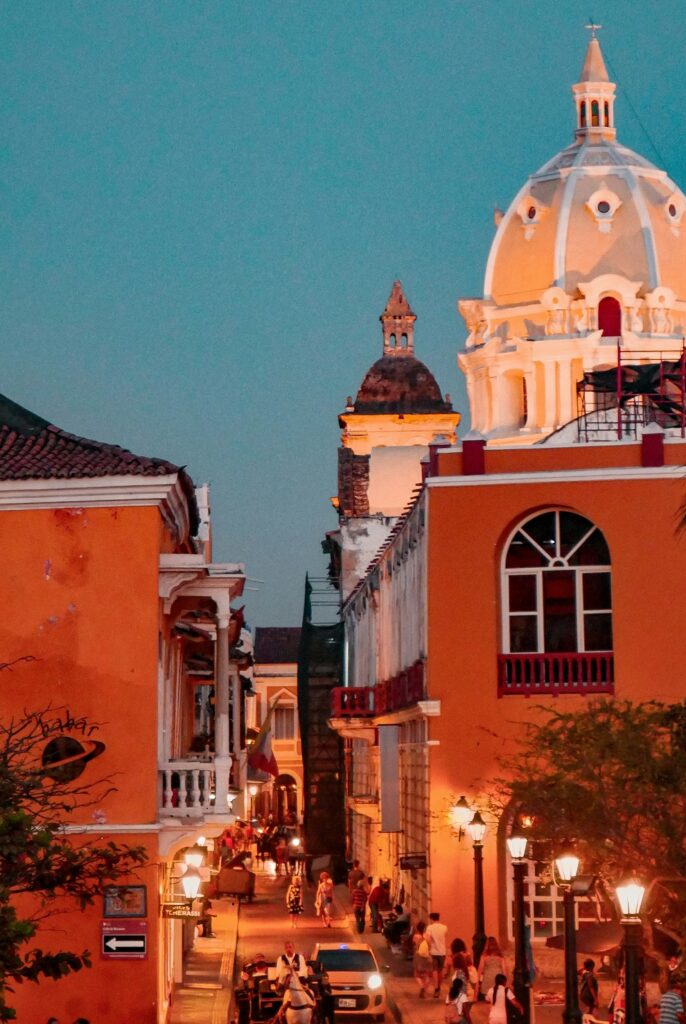
11. Pantanal, Brazil
The Pantanal is the world’s largest tropical wetland area, spanning Brazil, Bolivia, and Paraguay. This UNESCO World Heritage site is renowned for its incredible biodiversity and wildlife viewing opportunities, including jaguars, capybaras, giant otters, and hundreds of bird species. Unlike the dense Amazon Rainforest, the Pantanal’s open marshlands and seasonal floodplains provide optimal conditions for spotting wildlife year-round. Visitors can embark on guided safaris, boat trips, and horseback rides to observe animals in their natural habitat and explore the region’s diverse ecosystems. The Pantanal is also a paradise for birdwatchers, with opportunities to spot hyacinth macaws, toucans, and herons against a backdrop of expansive skies and lush greenery. The region’s eco-lodges and ranches offer sustainable accommodations and immersive experiences in one of the world’s most biodiverse habitats.
12. Colca Canyon, Peru
Colca Canyon is one of the deepest canyons in the world, located in the Andes Mountains of southern Peru. It is situated near the city of Arequipa. This natural marvel is twice as deep as the Grand Canyon, with dramatic cliffs and terraced fields carved by the Colca River over millions of years. Colca Canyon is also famous for its biodiversity and Andean condor population, which can often be seen soaring on thermal currents above the canyon walls. Visitors to Colca Canyon can explore traditional villages such as Chivay and Yanque, known for their colonial churches, hot springs, and cultural festivals. Outdoor enthusiasts can trek along the canyon’s trails, visit ancient Inca ruins, and witness breathtaking views of the surrounding volcanic landscapes. Colca Canyon offers a blend of natural beauty, cultural heritage, and outdoor adventure, making it a must-visit destination in southern Peru.
13. Easter Island (Rapa Nui), Chile
Easter Island, known locally as Rapa Nui, is a remote volcanic island in the southeastern Pacific Ocean, famous for its enigmatic Moai statues. These massive stone figures, carved by the indigenous Rapa Nui people between the 13th and 16th centuries, dot the island’s rugged coastline and interior landscapes. Visitors to Easter Island can explore archaeological sites such as Rano Raraku, where the Moai were carved from volcanic tuff, and Ahu Tongariki, with its impressive row of restored statues. The island’s volcanic craters, pristine beaches, and vibrant culture add to its allure as a UNESCO World Heritage site and one of the most intriguing destinations in the Pacific. Cultural performances, traditional crafts, and Polynesian cuisine provide insights into Rapa Nui’s unique heritage and way of life, making Easter Island a captivating and unforgettable travel experience.

14. Mendoza Wine Region, Argentina
Mendoza is Argentina’s premier wine-producing region, renowned for its Malbec wines, picturesque vineyards, and stunning mountain landscapes. Located at the foothills of the Andes Mountains, Mendoza benefits from high-altitude vineyards and sunny days, ideal for grape cultivation and wine production. Visitors to Mendoza can tour renowned wineries such as Bodega Catena Zapata and Bodegas Salentein, where they can sample award-winning wines and learn about the winemaking process. The region’s culinary scene offers gourmet experiences paired with local wines, featuring Argentine specialties such as grilled meats (asado), empanadas, and dulce de leche desserts. Outdoor activities in Mendoza include hiking, horseback riding, and scenic drives along the Wine Route (Ruta del Vino), where breathtaking vistas of vineyards and snow-capped peaks unfold. Mendoza’s blend of wine culture, gastronomy, and natural beauty makes it a must-visit destination for wine enthusiasts and travelers seeking an authentic Argentine experience.
15. Angel Falls, Venezuela
Angel Falls, or Salto Angel, is the world’s highest uninterrupted waterfall, plunging over 3,200 feet from the summit of Auyantepui in Venezuela’s Canaima National Park. Named after American aviator Jimmy Angel, who first sighted the falls in 1933, Angel Falls is a breathtaking natural wonder surrounded by dense rainforest and tepui (tabletop mountains). Accessible by boat or light aircraft, visitors to Angel Falls can marvel at the cascading water as it descends into the Churun River below, creating a misty spectacle that can be seen and heard from miles away. Canaima National Park, a UNESCO World Heritage site, offers opportunities for jungle treks, wildlife viewing, and cultural encounters with the indigenous Pemon people. Angel Falls is a bucket-list destination for adventure seekers and nature enthusiasts. It offers an unforgettable journey into Venezuela’s wild and remote landscapes.
16. Cusco, Peru
Cusco, often spelled Cuzco, is a historic city in southeastern Peru and the former capital of the Inca Empire. Nestled in the Andes Mountains at an altitude of over 3,000 meters, Cusco is a UNESCO World Heritage site famous for its blend of Incan and Spanish colonial architecture. The city’s main square, Plaza de Armas, is surrounded by colonial-era buildings. The Cathedral of Santo Domingo, built on the foundations of an Inca palace, is a prominent feature of the square. Nearby, the Coricancha (Temple of the Sun) showcases intricate stonework and Incan artifacts, while the Sacsayhuaman fortress offers panoramic views of the city and surrounding countryside. Cusco serves as a gateway to Machu Picchu, with many visitors beginning their journey to the ancient citadel from this historic city.
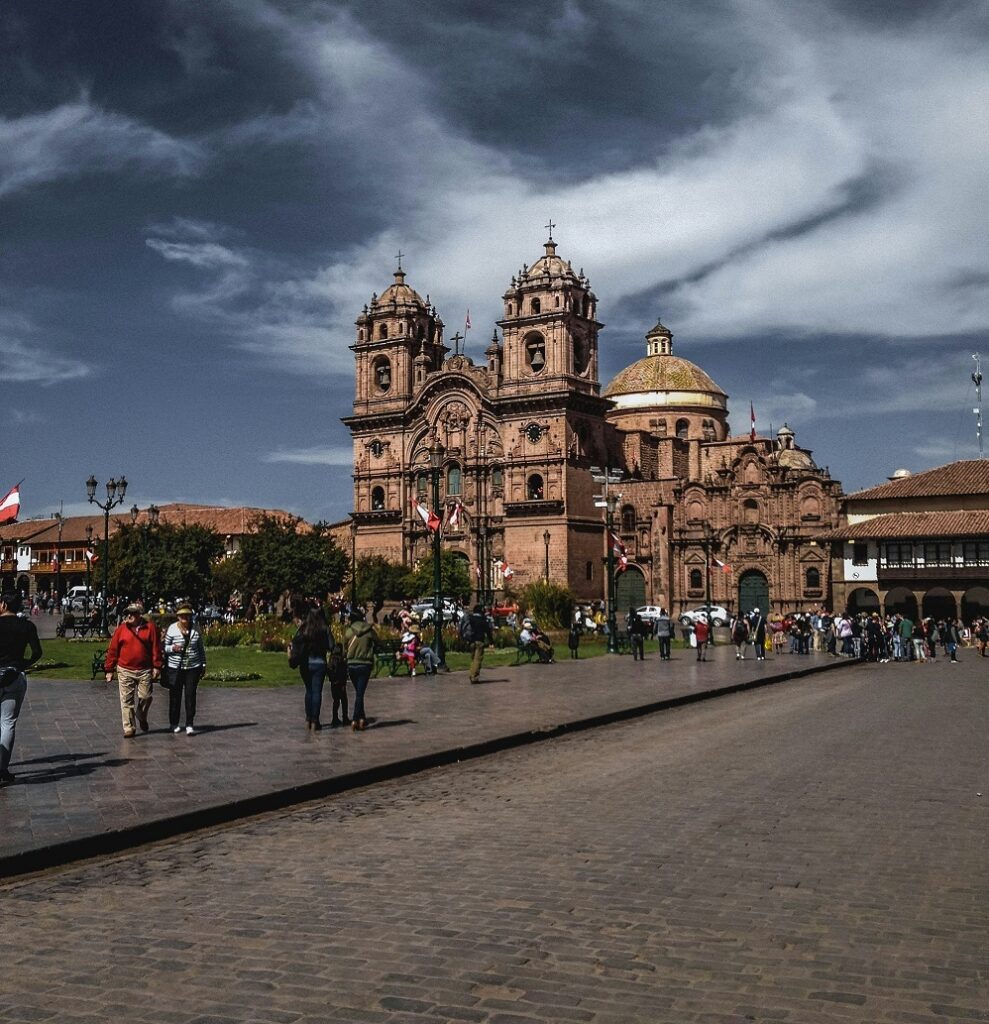
17. Salvador, Brazil
Salvador, the capital of Brazil’s northeastern state of Bahia, is a vibrant city famous for its Afro-Brazilian culture, historic architecture, and lively music scene. Founded in 1549, Salvador was Brazil’s first colonial capital and a major port city for the transatlantic slave trade. The Pelourinho historic district, a UNESCO World Heritage site, is a maze of cobblestone streets lined with colorful colonial buildings, churches, and museums. Highlights include the baroque São Francisco Church and Convent, adorned with exquisite gold leaf interiors, and the Afro-Brazilian Museum showcasing Bahian culture and traditions. Salvador’s Carnival celebrations are legendary, featuring elaborate costumes, rhythmic drumming, and street parades that draw revelers from around the world. The city’s stunning beaches, including Porto da Barra and Itapua, offer opportunities for sunbathing, swimming, and sampling Bahian cuisine at beachfront kiosks. Salvador’s blend of history, culture, and tropical beauty makes it a captivating destination on Brazil’s northeastern coast.

18. Huacachina Oasis, Peru
Huacachina is a desert oasis located near the city of Ica in southern Peru, surrounded by towering sand dunes and palm trees. Legend has it that Huacachina was created by a beautiful Incan princess, who turned into a mermaid and formed the lagoon to escape from hunters. Today, Huacachina is a popular destination for adventure seekers and travelers seeking relaxation amidst stunning desert landscapes. Visitors can take thrilling dune buggy rides across the sand dunes, go sandboarding down steep slopes, and enjoy sunset views over the oasis. The lagoon itself is ideal for swimming and paddle boating, offering a tranquil escape from the desert heat. Nearby attractions include the Nazca Lines, mysterious geoglyphs etched into the desert floor, which can be visited on guided tours from Huacachina. Whether seeking adrenaline-pumping activities or serene desert vistas, Huacachina offers a unique and unforgettable experience in Peru’s coastal desert region.
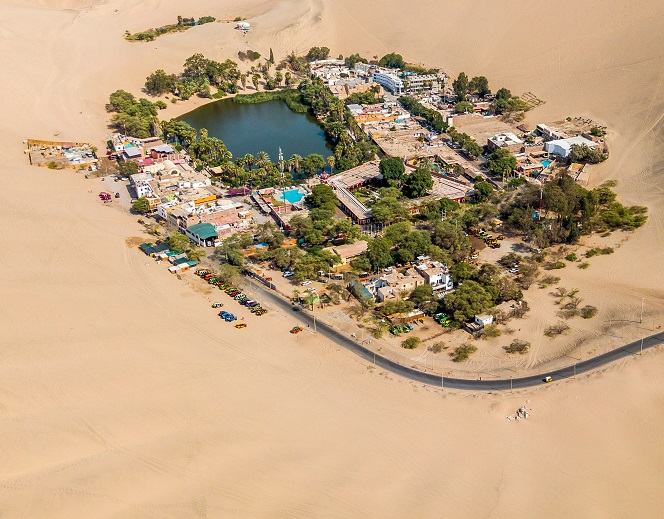
19. Cotopaxi National Park, Ecuador
Cotopaxi National Park is home to Cotopaxi, one of the world’s highest active volcanoes, located in the Ecuadorian Andes. The park’s dramatic landscapes include paramo grasslands, volcanic peaks, and rugged trails. This offers outdoor enthusiasts opportunities for hiking, mountaineering, and wildlife watching. Cotopaxi volcano, with its symmetrical cone and perpetual snowcap, is a symbol of Ecuador’s natural beauty and ecological diversity. Visitors can hike to the Jose Rivas Refuge at over 4,800 meters above sea level for panoramic views of the surrounding mountains and volcanic landscapes. The park’s diverse flora and fauna include Andean condors, deer, and wild horses, adapting to high-altitude environments. Cultural experiences in Cotopaxi National Park include visits to indigenous communities and traditional haciendas. Travelers have the opportunity to learn about local customs and agricultural practices firsthand. Cotopaxi National Park is a paradise for nature lovers and adventurers exploring Ecuador’s highlands and volcanic terrain.
20. San Pedro de Atacama, Chile
San Pedro de Atacama is a desert oasis town in northern Chile, renowned for its otherworldly landscapes, geothermal wonders, and clear night skies. Surrounded by the Atacama Desert, the driest desert in the world, San Pedro offers a stark contrast of salt flats, geysers, volcanic craters, and colorful rock formations. Highlights include the Valle de la Luna (Valley of the Moon), where eroded sandstone and salt formations resemble a lunar landscape, and the El Tatio Geysers, the world’s highest geothermal field. At night, stargazing enthusiasts flock to San Pedro to observe the Milky Way and constellations against the backdrop of the desert sky, which boasts some of the clearest and darkest skies on Earth. Cultural attractions in San Pedro include the Pukara de Quitor, a pre-Columbian fortress overlooking the valley, and local artisan markets offering handicrafts and textiles.
These 20 destinations showcase the breathtaking diversity and natural wonders that make South America a captivating and unforgettable travel destination. Whether exploring ancient civilizations, encountering wildlife in pristine habitats, or marveling at stunning landscapes, each place offers a unique experience that leaves a lasting impression on travelers from around the world.
